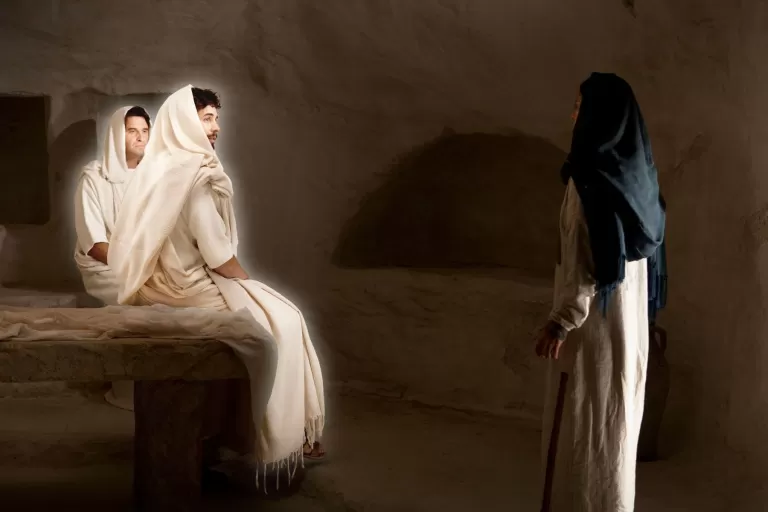
It’s Easter, and our opportunity to tell the greatest story of hope ever told.
In spite of the midday hour, darkness covers the land of Jerusalem, and by in large the hearts of the people. The Lord Jesus hangs in incomprehensible agony on the cross of Calvary. Standing near the cross is his mother and Mary Magdalene, those devoted and beloved women who accompanied Him, their sufferings surely grievous as they helplessly watch Him die. During those awful three hours from noon to 3 P.M. on that Friday afternoon, Jesus is again afflicted with the exacting pain of the atonement for the sins of mankind. It is horrible! And then, somewhere around 3 P.M. He cries out with a loud voice, “…My God, my God, why hast thou forsaken me?” (Matthew 27:46)
The Father has withdrawn leaving the victory entirely to the Son. The Lord Jesus has now descended to the very depths, the lowest He can go.
Shortly after that, The Savior, knowing that all things were now accomplished, declared, “…Father, it is finished, thy will is done… ” (JST Matthew 27:50) “ … into thy hands I commend my spirit: … ” (Luke 23:46) And the Savior gave up the Ghost, His spirit passing at that moment into the spirit paradise that He had so recently spoken of to the penitent thief.
Again, it is now late Friday afternoon. Quickly His disciples and friends take His body down from the cross, and hastily place it in a borrowed tomb. The Saturday Sabbath begins shortly. For the few remaining hours of Friday, all of Saturday, and until sometime in the predawn hours of Sunday, or in other words, over three days time, the Master’s body lies in the tomb while His disciples hide and grieve.
Then, the miracle of all miracles: Jesus returns and takes up that broken and destroyed body, bringing it forth in resurrected perfection and glory. And though it certainly was not necessary in order to release Him from the tomb, the angels come and roll back the stone that sealed the tomb.
It is now just before dawn. Mary Magdalene and the other women come down to the garden tomb, bringing spices to finish the preparation of His body for proper burial wondering, as they go, who will roll back the huge stone to give them entrance. But as they approach the tomb in the dim light, not only is the stone already rolled back, but two men whose countenances were as brilliant as lightning are sitting on the stone. They say to them, “He is not here: for he is risen … Come, [and] see the place where the Lord lay.” (Matthew 28:6) The angels continue, “…go quickly, and tell his disciples that he is risen from the dead;… ” (Matthew 28:7)
Well, Mary leaves the tomb, evidently not completely understanding what it means. She runs and tells Peter and John, “ … They have taken away the Lord out of the sepulcher, and we know not where they have laid him.” (John 20:2) Jesus had told them repeatedly that He would rise again the third day. But they don’t understand; how could they? Such a thing has never occurred in the history of mankind.
Well, Peter and John leave immediately and run to the tomb – and sure enough, the tomb in empty. They return home leaving Mary there alone at the tomb. Mary stoops down weeping out of grief and loss, and peers into the darkened tomb. The linen grave clothes lie as they were, the body of Christ having passed through them.
The two angels, evidently not visible to Peter and John, are sitting where the body of Jesus had lain. They speak to her, “ … Woman, why weepest thou? [and] She sayeth unto them, Because they have taken away [the body of] my Lord, and I know not where they have laid him” (John 20:13)
And then at that moment, Mary perceives someone behind her. She turns around. It is, she supposes at a glance, the gardener. He speaks to her, “ … Woman, why weepest thou? whom seekest thou? … ” (John 20:15)
Mary supposes again that this is the gardener, and she says to Him, “ … Sir, if thou have [hast] borne him hence, tell me where thou hast laid him, and I will take him away.” (John 20:15)
It’s Jesus, but she doesn’t know that. And then He says only one word to her, but oh, the significance and the familiarity of that word. He says simply, “…Mary...” (John 20:16)
Instantly, she recognizes Him, and her tears of pain and loss are transformed into those of the most transcendent joy. She runs to Him. “ …Rabboni… ” she cries out, meaning, ‘My beloved Master.’ (John 20:16) And indeed He was to her, and indeed He must be to us.
Mary’s world changed forever at that moment, as did ours. Can you imagine the significance of her seeing Him. Everything He had ever taught – everything now had greater authority, greater power, greater believability. He was no longer dead. He was a living person of flesh and bone. And because He was, so will we. All our eternal possibilities stand or fall on the reality and the truth of His resurrection. This is the core center of Christianity.
I declare to you ‘He lives, and while He lives I’ll sing.’ Joy, power, peace, priesthood, and love and family do not end with the grave because of Him. ‘He lives all glory to His name; He lives, my Savior still the same. Oh, sweet the joy this sentence gives: I Know That My Redeemer Lives.
Story Credits
Glenn Rawson – March 2000
Music: The Easter Story – Michael Leavitt
Song: I Know That Me Redeemer Lives – The Mormon Tabernacle Choir and Orchestra
Source: Adapted from Matthew, Mark, Luke, John

